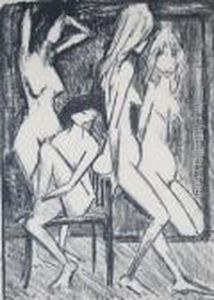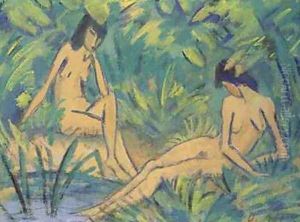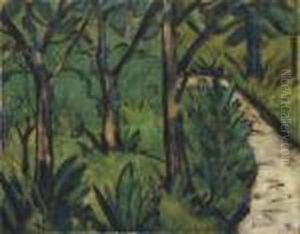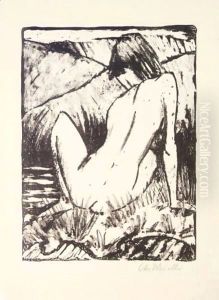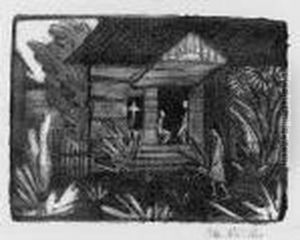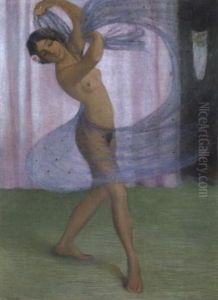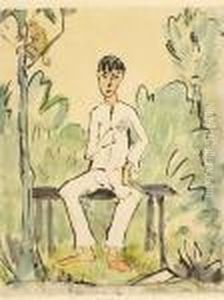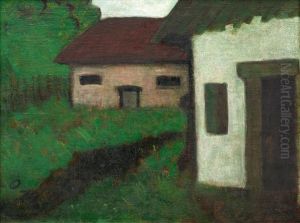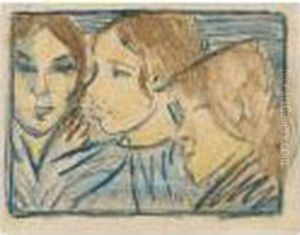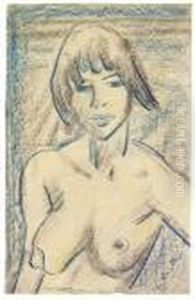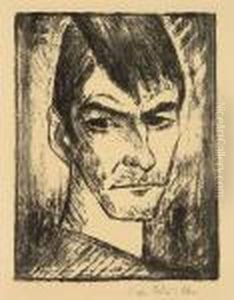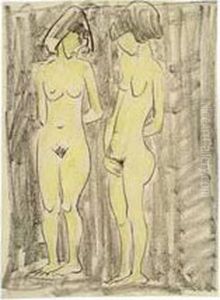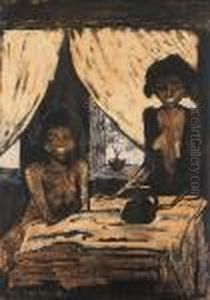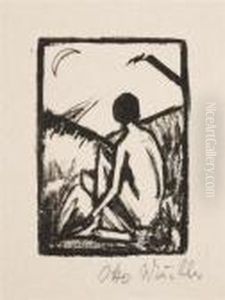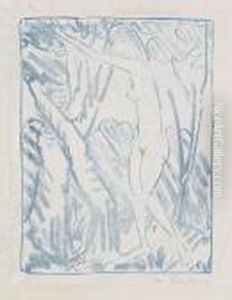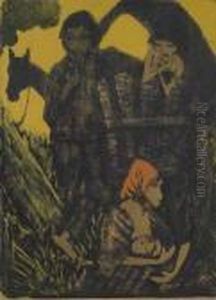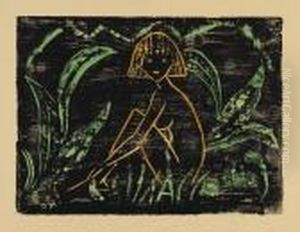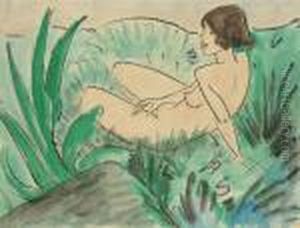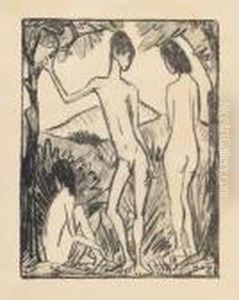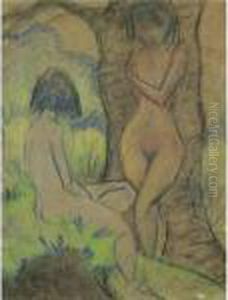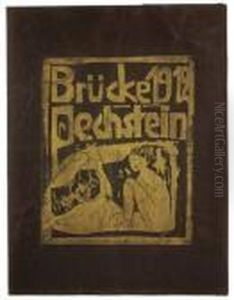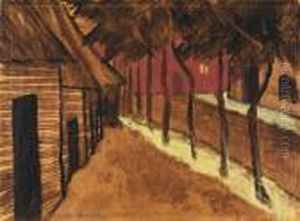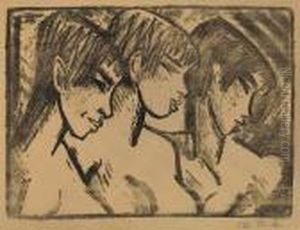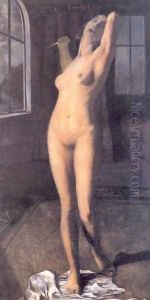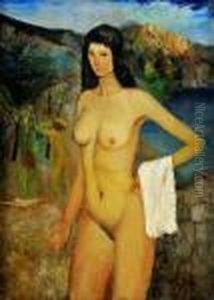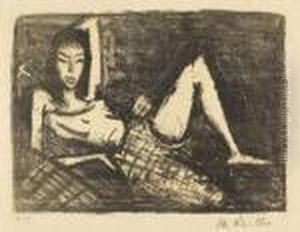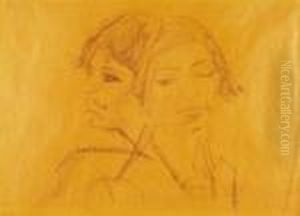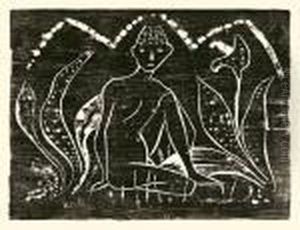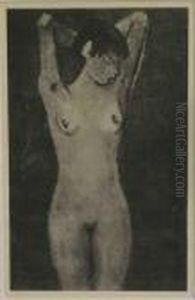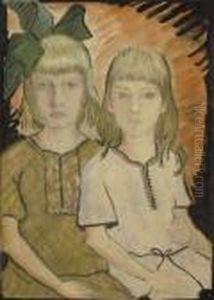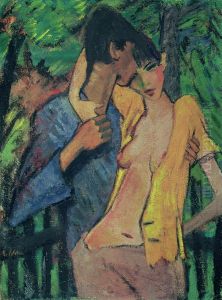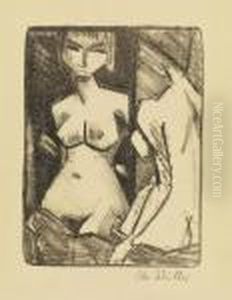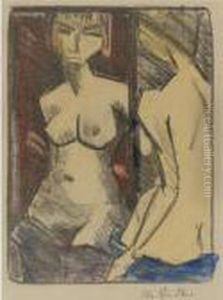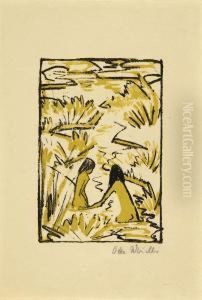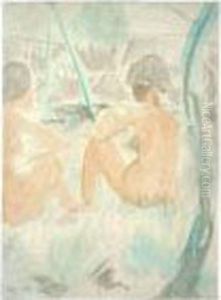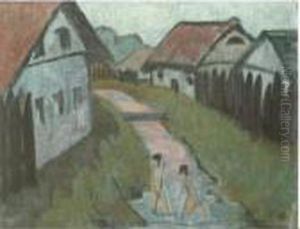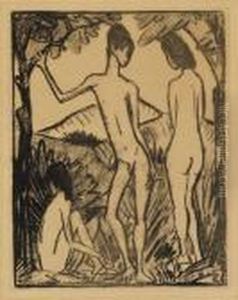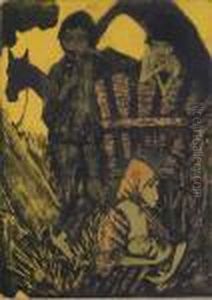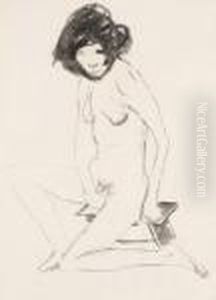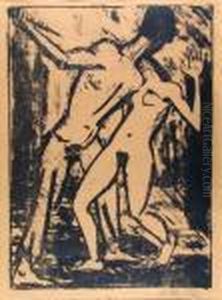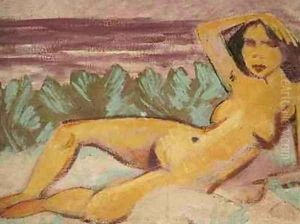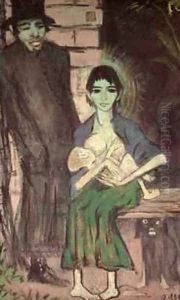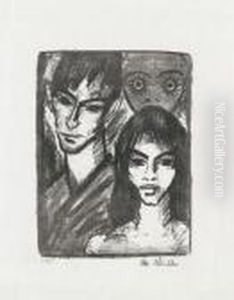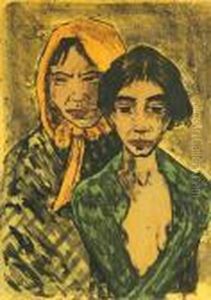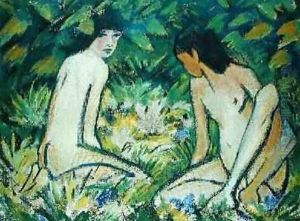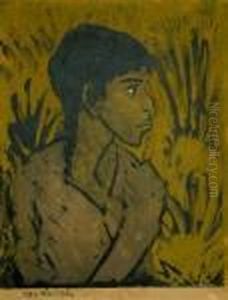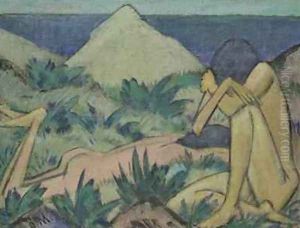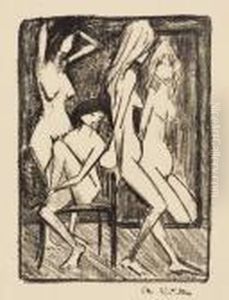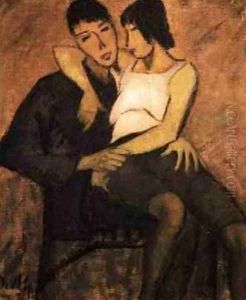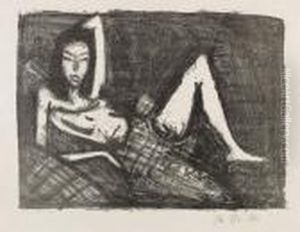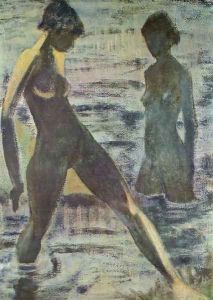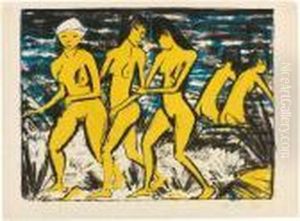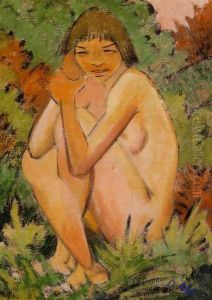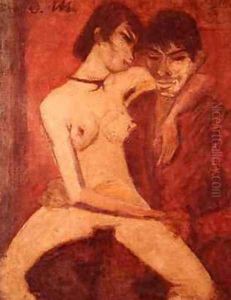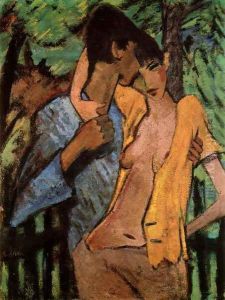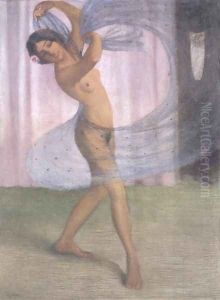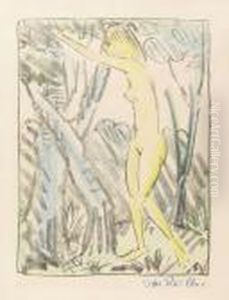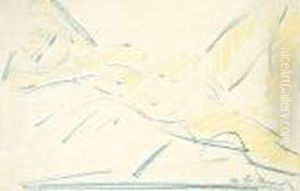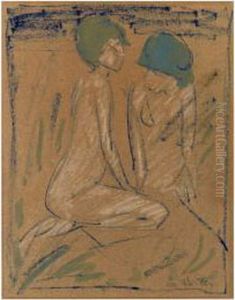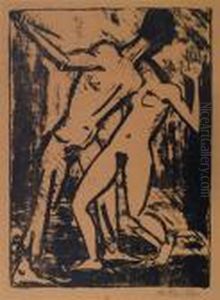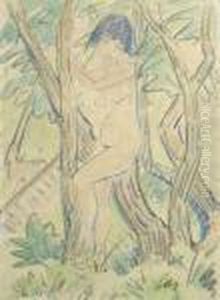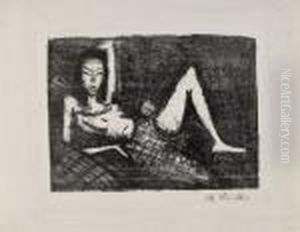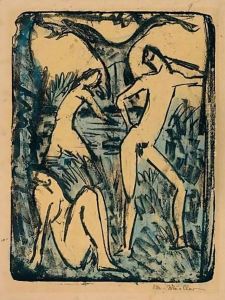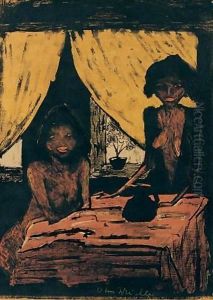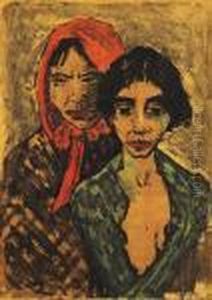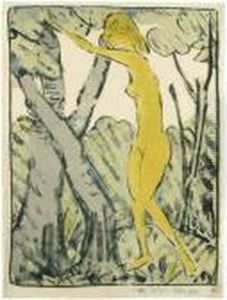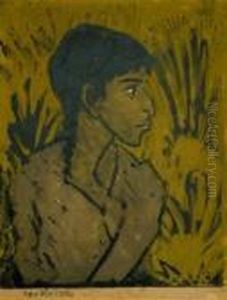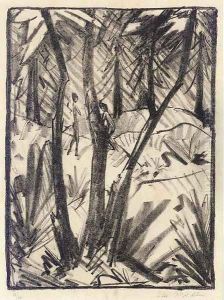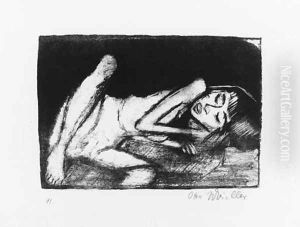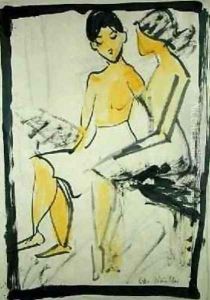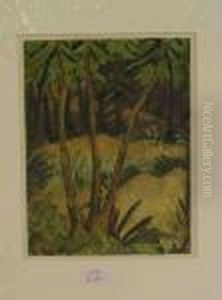Otto Mueller Paintings
Otto Mueller was a German painter and printmaker, and a member of the German expressionist group Die Brücke. Born on October 16, 1874, in Liebau (then part of the German Empire, now in Poland), Mueller was the son of a tax inspector. He began his artistic education in Dresden in 1890 and continued his studies at the Academy of Fine Arts in Munich starting in 1894. However, he left Munich after only a few semesters.
Initially, Mueller's work was influenced by Impressionism, but his style evolved significantly after he joined Die Brücke in 1910, where he came into contact with artists such as Ernst Ludwig Kirchner and Erich Heckel. His work from this period began to display the characteristic vibrancy and emotional intensity of Expressionism, with a particular focus on depicting landscapes and nudes in a simplified, almost lyrical manner.
Mueller served in the German military during World War I, which affected him deeply, and his work often reflected his experiences and the human suffering he witnessed. After the war, he became associated with the Dresden Secession group in 1919, further developing his unique style. Mueller's works are known for their use of flat areas of color and an almost dreamlike quality, often featuring Gypsy or Eastern European peasant figures, landscapes, and nudes.
Despite his association with these avant-garde groups, Mueller's work retained a certain individuality. His approach was less aggressive than that of his Die Brücke colleagues, leaning towards a more harmonic and introspective depiction of his subjects. His technique often included a combination of printmaking and painting, which added a textural quality to his compositions.
Mueller's artistic career was cut short when he died on September 24, 1930, in Breslau (now Wrocław, Poland). After his death, the Nazis labeled his work as 'degenerate,' and many of his pieces were removed from German museums. Despite this, his work has been reassessed and celebrated in later years for its contribution to German Expressionism and its unique aesthetic. Otto Mueller's legacy lives on through his influence on the German art scene of the early 20th century and through the works that continue to be admired in galleries and collections around the world.
